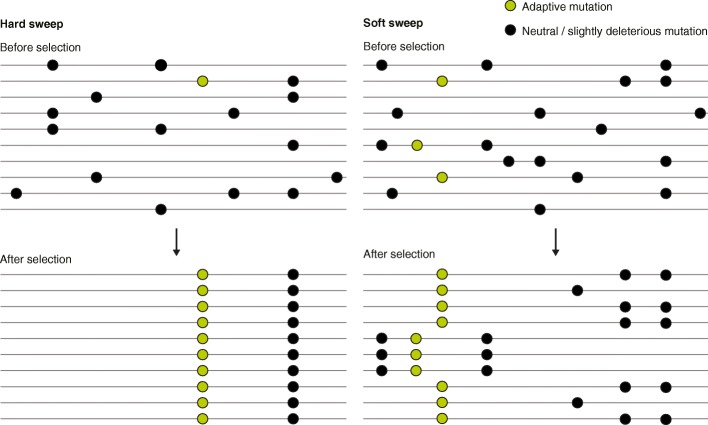Fig 1.
Schematic describing the impacts of hard and soft selective sweeps on patterns of linked genetic variation. Each row depicts an individual haploid genome. Adaptive mutations are colored in green, while neutral or slightly deleterious mutations are colored in black. Alleles that match the reference genome are not depicted. A hard selective sweep (left panel) involves a single adaptive mutation that arises de novo and subsequently increases in frequency, carrying with it neutral and slightly deleterious variants to which it is linked. By contrast, a soft selective sweep involves selection on either standing variation or recurrent de novo mutations, such that adaptive alleles are present on multiple distinct haplotypes. These adaptive mutations may or may not occur in the same genomic position. All haplotypes carrying an adaptive allele simultaneously sweep to higher frequency, leading to only modest reductions in levels of nearby genetic diversity

